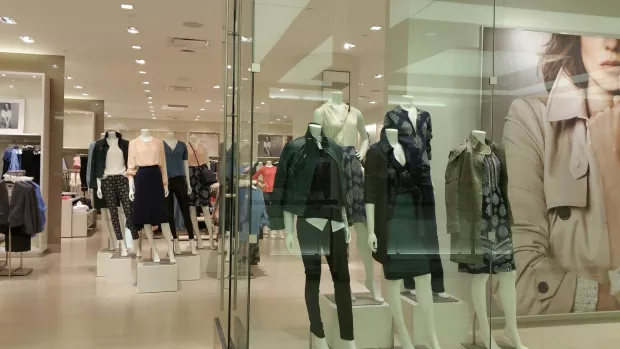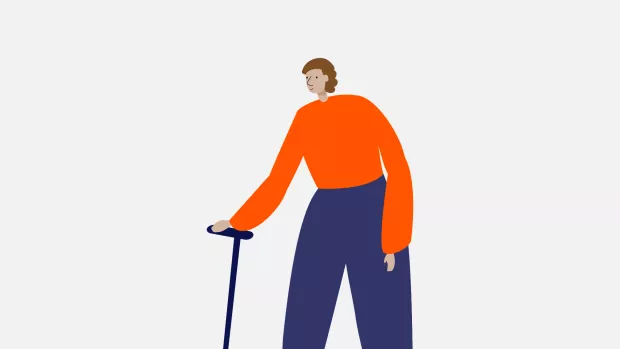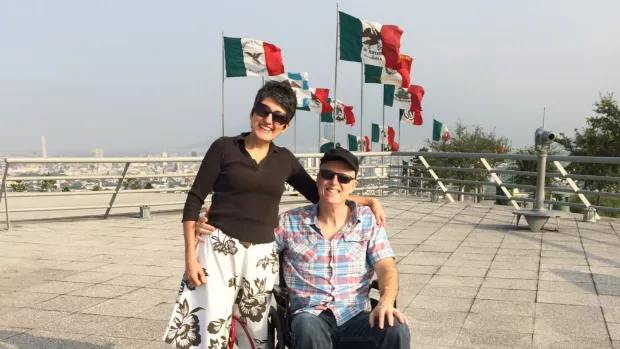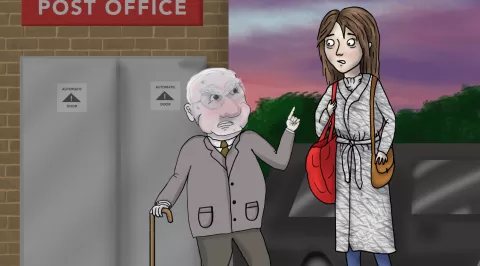
The truth about using a Blue Badge for MS
So, you’ve just been diagnosed with an invisible illness you may have never heard of...
Getting diagnosed with MS
Things are great right? You have a whole host of new symptoms you’ve never experienced before. And you’re wondering to yourself if this is a new symptom of your new illness or just a reaction to new medication. Or are you just tired and stressed? Will the feeling in your hand ever come back? Will you ever have a time in your life where you don’t feel tingly?
Imagine thinking these things at 22 years old. That’s how old I was when I was diagnosed.
Applying for a Blue Badge
If you're applying for a blue badge with MS, you're not alone. Many people suffering with MS are in the same situation as you.
Most days I’m lucky enough now to say that I’m fine and I can get through the day. However, sometimes I need a little help - as we all do from time to time.
My friend had been convincing me to apply to get a blue badge for months on end. And I refused every time.
When she first said it to me I remember exclaiming, “WHAT? I can’t get one of those, I’m not disabled enough! Don’t you need to be in a wheelchair to get one of those??”
“No,” she said, “don’t be silly, you’re struggling to walk some days and you really need one. I use mine when I’m struggling and it helps tremendously. Stop being so stubborn and apply.”
Well after fighting her on that point for quite some time, I decided maybe I was being stubborn and so begrudgingly put in my application.
“I felt too scared to use it”
When I first received my badge it felt so weird. I felt too scared to use it. “What will other people think of me when they see that I can walk?”, “What if they say things to me?” I immediately thought. I was really worried. I’m sure we’ve all thought that when we first got our badges right?
I think it’s a perfectly normal reaction, at the end of the day to everyone else we may not look sick, they don’t know what’s happening on the inside.
I put the badge in my car’s glove box and didn’t use it for at least the first few weeks.
Using my badge for the first time
One day I woke up severely fatigued and had such pain in my legs that I struggled to walk to the end of my driveway. But I had client orders that HAD to be posted that day and there was no one else available to take them for me. So, I parked up in town to go to the post office.
There was no way I could have parked in a normal space and walked down. So I used my badge for the first time so I could park right outside. It felt like heaven having such a short way to stumble.
I pulled my bag of orders over my shoulder and dragged myself inside.
The relief I felt getting back into my car was incredible. I was so glad I had posted the orders and a weight was now off my mind. I felt so relieved I could park right outside and I was excited to get home so I could lie down.
That’s when it happened…
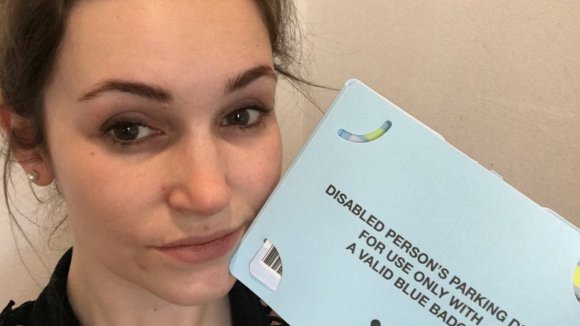
I didn’t want to use my badge again. This situation had scared me. I don’t do confrontation like that and the fact that he had the confidence to come up to me and actually call me out shocked me.
The incident
I had just collapsed back into my car and was taking a few minutes' breather before I set off. I literally couldn’t get my breath that day. I had pulled my badge off my dashboard and put it back in my bag ready to go. The keys went into my ignition but before I could start the engine a man came and stood in front of my car.
He looked an older, scruffy kind of man with a bad attitude. He scowled at me.
I looked back at him, confused.
He then came round the side of my car and tapped on my window. He loudly screamed at me, “Where’s your badge?? You can’t park there!”
I had never felt so angry. This person had just judged me for really no reason. However, I understood that from another person’s perspective I was a 20-something-year-old with no sign of a wheelchair, sat in a disabled parking bay with what appears to be no badge.
‘Fine’, I thought and pulled my badge back out of my bag and waved it at him. I couldn’t believe his confidence.
As soon as he saw it he looked angry, tutted, shook his head at me and walked away.
“I didn’t ask to be disabled”
I remember thinking to myself, ‘You know, I didn’t ask to be disabled, do you honestly think I would park here if I didn’t need to?’
I felt disappointed and angry. I didn’t want to use my badge again. This situation had scared me. I don’t do confrontation like that and the fact that he had the confidence to come up to me and actually call me out shocked me. I guess he thought he was just doing his civil duty, but he wasn’t thinking about the effect that calling me out like that had.
I’d never used my badge before. That was the first time and it took a lot of courage for me to use it in the first place.
Defining disability
It was at that moment when I was driving home that I started to think about the general public's perception of ‘disability’. If a wheelchair is displayed on everything associated with disability, how could we expect anyone to think any differently?
People are not educated enough about invisible illness. They don’t understand, they choose to see what’s in front of them.
If you have a wheelchair they’d class you as disabled, but if not then, what? You’re lying? If they know no different you can see why they’d make that assumption.
Teaching people the importance of a blue badge for MS
Nowadays, using my badge is very different to me. I have grown to love my blue badge and I appreciate it for the freedom it gives me. Every time anyone says anything I respond by teaching them about invisible illness and how they need to be mindful of how people may feel on the inside.
I tell them about the first time I used my badge as I have done with you above. I use that experience as a way to educate and people have been surprisingly understanding as soon as they knew.
So, how can we stop this happening? How can we change public perception of disability? Do we campaign to change the ‘wheelchair’ disability symbol? Do we start doing talks in schools about invisible illness and what it is? Do we even need to do anything?

